Two major factors play into the drama of home sales… speed and price. How quickly your home sells and how much the “best offer” comes in at have a lot to do with how your home shows itself. That’s where these Home Staging Tips come in handy.
One of the most difficult parts for homeowners who are placing their home for sale is to be able to step back and take an objective look at their house. While doing so, they need to understand that, while it is currently their home… with all its well-loved eccentricities… it will soon be someone else’s home.
And sometimes, those eccentricities make it difficult for anyone else to imagine it as their home. And if they can’t picture living there, they won’t want to buy it.
It’s a simple as that.
What is home staging and how did it become a thing?
Home staging is the process of preparing a home for sale. This may include decluttering, depersonalizing, and making repairs. Home staging is often used to make a home look more appealing to potential buyers.
The practice of home staging began in the early 1990s. The first home stagers were real estate agents who realized that they could sell homes faster and for more money if they prepared them for sale. Home staging has become increasingly popular in recent years. This is likely due to the fact that it can help sellers get their homes sold faster and for more money.
What are the benefits of home staging?
There are several benefits of home staging. One of the most important benefits is that it can help you sell your home faster. According to the National Association of Realtors, homes that are staged sell for 8% more than unstaged homes. This is an average of $19,000 more.
Home staging can also help you sell your home for more money. If a buyer can imagine themselves living in your home, they are much more likely to be willing to pay a higher price. A 2015 study by Zillow found that buyers will offer almost 3% less on a home if it doesn’t have staging photos online versus one with staging photos. That’s around $3,300 less!
Staging may also benefit your neighborhood as well as the surrounding community. When homes are staged they look cared for and this can encourage other homeowners to take better care of their homes, which in turn can make the neighborhood more desirable.
Home Staging is for Prospective Buyers, Not for You
Most prospective buyers respond well to the basic home showing recommendations, such as keeping a clean, clutter-free home in good repair. It’s not hard to imagine that homes that owners keep their house in shape for showings receive higher offers than homes that aren’t ready for show-time.
Fresh paint, everything in working order, and – of course – a house that is free of clutter, debris, and mess make a stronger first, second and third impression.
Below are two examples a house, pre-staging. Although to the casual observer, it appears neat, clean, and ready for showing… but there are a few basic “Don’ts” represented here. Although sometimes staging requires a complete reconfiguration of the furniture, barring that, here are just a few of the ideas on how to make this room more “show-ready.”
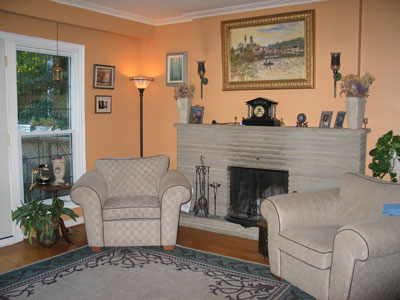
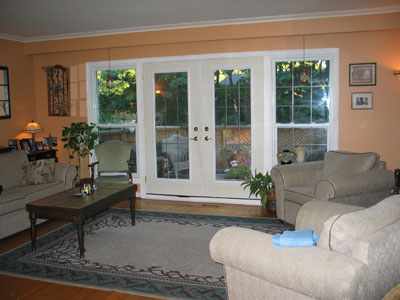
- A fresh coat of paint is recommended, returning the room to a neutral color.
- Although it may seem minor, never leave anything extraneous just sitting on the arm of the couch.
- Clear the coffee table completely, or – at the most – leave an attractive coffee table book.
- Remove the hanging lanterns from the windows.
- Store the additional green chair that is currently in the corner making the room seem more cluttered.
- Roll up and store away the area rug in order to show off the hardwood floors.
- Clean the windows to a streak-free shine.
- Remove most of the decorative items from the fireplace mantle, especially the dried flowers in the vases. Leave the mantle clock and put the vases together on one side.
- Clean the glass on the wall lanterns, you may like the “gothic” look of the dark glass, but others will see it as dirty.
- Invest in some slipcovers for the sofa and chairs.
- Remove the pictures that are on either side of the standing lamp.
- Perform some “plant surgery” to remove dead or fading leaves from the plant on the floor, or replace them with top-quality artificial plants.
- Remove all items from the end table by the window.
- Scrub away the soot stains on the fireplace, and clean the fireplace out completely (removing ash and old wood, leaving a pile of fresh, clean logs or light the fireplace for showings).
Hopefully, that small example gives you an idea of how intricate Home Staging can be, but it can make a world of difference.
Just take a look at a few Before and After photos (source: Cary Nowell Designs), and you can see what a dramatic difference Home Staging can make.

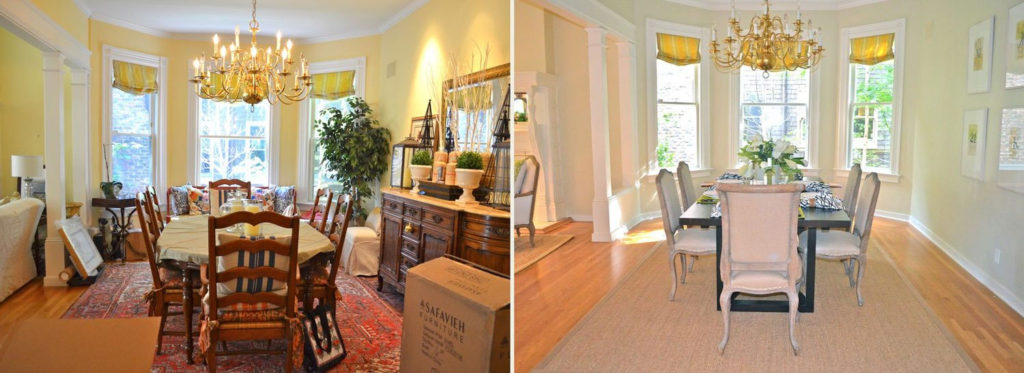


If you’re ready to tackle your home staging project, here are the 5 Biggest and Best Home Staging Tips
Although there is no one-size-fits-all answer to how you should stage your home, there there are a few common themes when it comes to home staging. One of the most important things is to declutter and depersonalize your home. This will make it look less cluttered and more appealing to buyers. You should also make repairs if necessary and update your home’s décor. If you have the time and money, you may want to consider hiring a professional stager. They will be able to help you create a strategy that will work best for your home. Here, we list the top 5 home staging tips to help your home make the best first impression possible.
 Stick with Neutral Colors
Stick with Neutral Colors
You may love how that bright purple living room wall expresses your personal style, but it could be off-putting to some. I have actually experienced – first hand – someone who turned their backs on a perfectly lovely home because they didn’t like the color of 1 accent wall in the living room. One Wall!!
Although this process is far more labor-intensive and requires a bit more of a budget, it is probably one of the biggest and most important home staging tips I can give you.
Stick with neutral colors, such as beige, gray, white, taupe, etc. There’s a reason builders and model home designers use these colors, they are the easiest for prospective buyers to visualize their own personal style and the least likely to offend someone who has a personal dislike of anything blue.
This is a tip I recommend to anyone if they are considering repainting their home and they might consider selling within the next 2 – 4 years. Anything beyond that, and the walls will likely need to be repainted to freshen up the space anyway.
Finally, if you insist on adding some additional color to a room, keep it limited to accent areas that the buyer can easily imagine painting over.
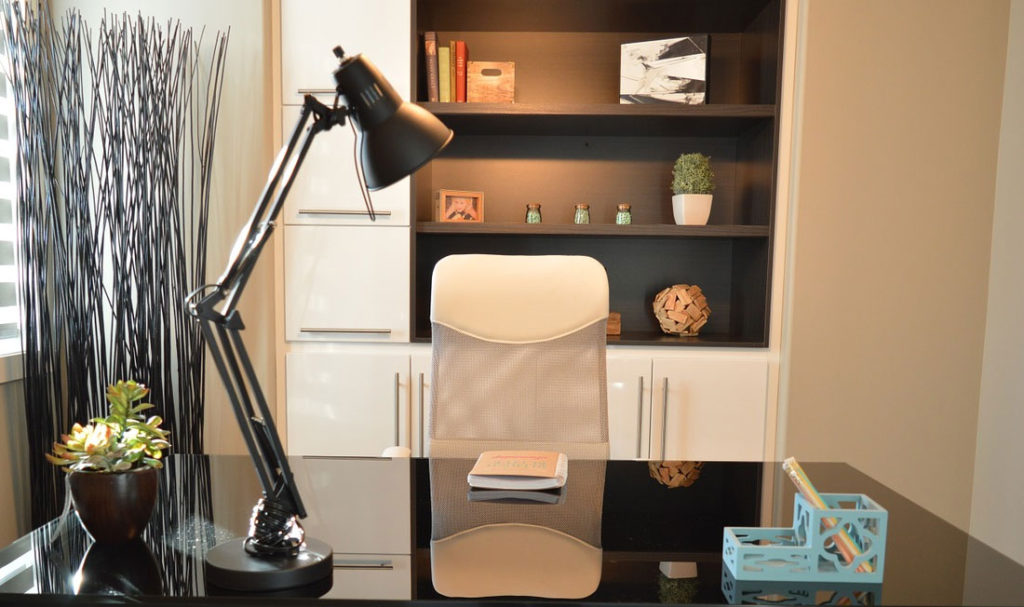
Image Source: 25 Decor Tips to Make a Small Space Feel Bigger
 Keep Things Light & Bright
Keep Things Light & Bright
Nobody wants to live in a dark dungeon. Brighten up rooms as much as possible by letting natural light shine! Keep blinds and curtains open during showings, as this will also allow the room to look bigger. If you don’t have quite enough natural light, add some decorative table lamps or floor lamps that you can turn on for showings. This helps create a sense of welcoming in your home and avoids the challenges of potential buyers stumbling trying to find the light switches.
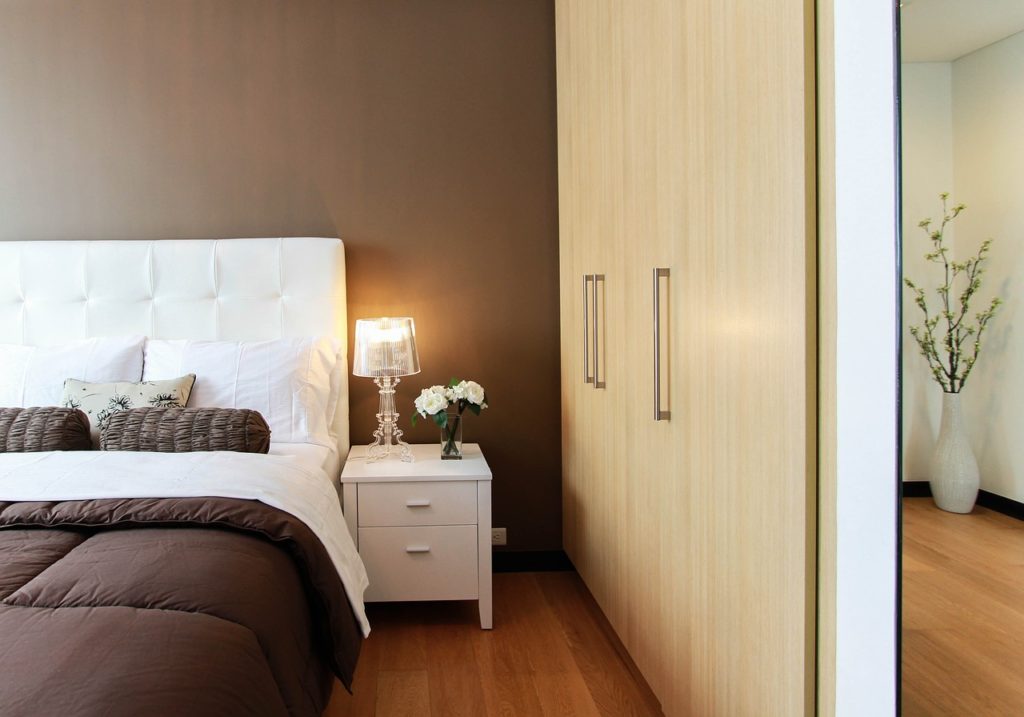
 Declutter, Declutter, Declutter
Declutter, Declutter, Declutter
When selling a home, space sells. And clutter takes up that very valuable space! Decluttering will make your home look bigger and more desirable. Decluttering for staging is a bit different than decluttering for living, because – for the sake of staging – you don’t have to get rid of any of your precious belongings forever. Simply pack them away, which you’re going to need to do before you move anyway!
For staging, decluttering includes the closets. Pack and remove off-season coats and clothes so that you don’t crowd the front hall or bedroom closets with clothing items you don’t need.
Excess decor items, work, and home papers, board games, old movies, even cooking utensils that you don’t need to use on a daily basis can be packed away. Keep in mind that buyers will be opening EVERYTHING in your home (except, maybe, your dresser drawers). This includes your closets & cupboards. After all, they want to make sure that their personal belongings will fit in this new space.
Decluttering also means cleaning as you have never cleaned before. Every square inch of your house should absolutely shine, from the baseboards to the ceilings and every nook, cranny, and corner in between. A clean home suggests that the current owners took proper care of the house. If you don’t have the time or energy to do this yourself, consider hiring a cleaning crew to do a pre-sale scrub-down.

 Focus on Freshness
Focus on Freshness
Fresh flowers and healthy plants add a certain sense of life and freshness to a home. You don’t want to attempt to recreate an indoor greenhouse, but a few well-placed, healthy plants or fresh-cut flowers can add a hint of freshness in areas that matter. And don’t worry if you don’t have a green thumb. If you handle your staging correctly, you’ll only need to keep the plants alive for a short period of time. Or, if that idea doesn’t appeal to you, you can always opt for quality artificial plants. Just make sure they are of good quality… they need to look fresh, not cheap.
The other critical area of freshness is not one you (or they) will take in with their eyes. You need to make sure there are no lingering odors in your home. The deep clean will help, but it’s important to stay on top of things. Clear out your trash bin regularly, especially before showings. Avoid cooking strong-smelling foods, including curries, fish, or garlic. Although air fresheners can help, be cautious… a house that smells TOO MUCH like an air freshener can give the impression that you are trying to hide something.
A nice little trick is to mix some vanilla extract with water and put it in the microwave for 1 minute before you leave for the showing. This allows the vanilla to steam, and the entire kitchen will smell like fresh baking.
Or, if you feel really ambitious, bake some fresh pies, bread, or buns on a regular basis (especially right before a showing, but in time to clean up the mess). Who doesn’t like the smell of freshly baked bread? Or, if they don’t, you probably don’t want them living in your old house anyway! There is nothing wrong with a basket of fresh-baked buns on the kitchen table as a “Staging Accessory”.

 Stage the Rooms that Matter
Stage the Rooms that Matter
When it comes to home staging, not every room in your home is considered equal. Therefore, you should focus your time and effort on the rooms that have the highest potential of influencing a buyers’ purchase decision.
According to the National Association of Realtors’ 2017 Staging Stats report, the 3 rooms that are the most important to buyers are:
- Living Room
- Master Bedroom
- Kitchen
These are the rooms you should focus on – at least first – when you’re staging a home. If you want to tackle some of the other rooms for added measure, do them after you’ve done the critical 3.
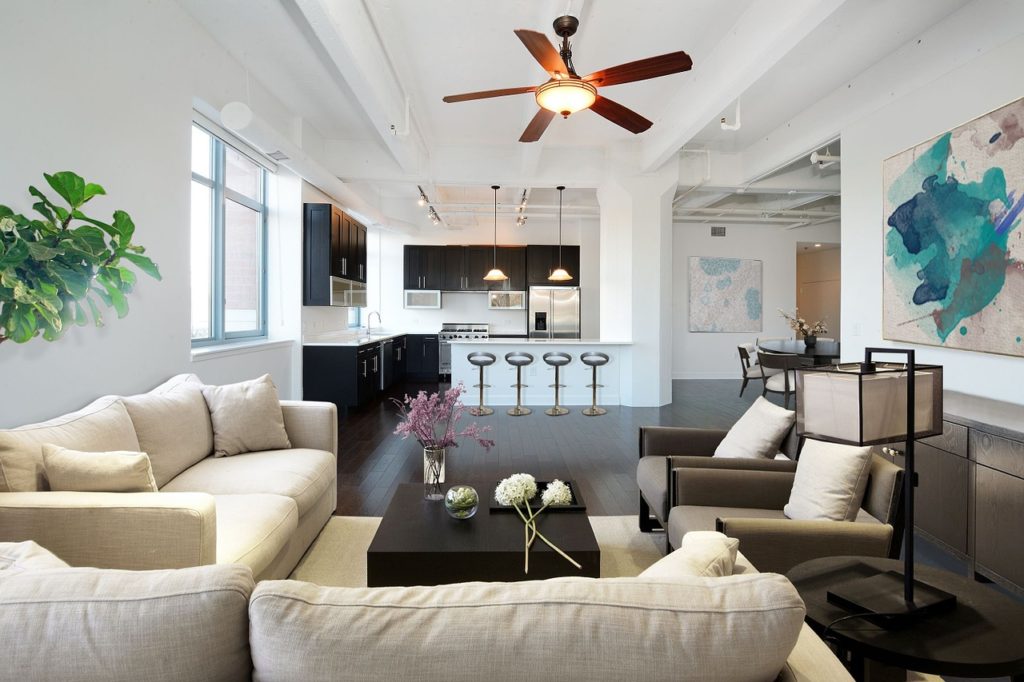
If you need help staging your home, hire a Home Staging Professional
There are many small details that people overlook when getting ready to sell their homes, which is why professional staging experts are now available to help you through that process.
A staging session normally takes between 7 – 10 hours, depending on the size of your home and the extent of staging required. And be prepared to pack… a good portion of staging is removing extraneous items from the home to leave it as clear and clutter-free as possible. .

 Stick with Neutral Colors
Stick with Neutral Colors Keep Things Light & Bright
Keep Things Light & Bright Declutter, Declutter, Declutter
Declutter, Declutter, Declutter Focus on Freshness
Focus on Freshness Stage the Rooms that Matter
Stage the Rooms that Matter
Amazing tips! These tips are definitely very helpful. I am looking for the same and finally found it here. Thanks for sharing.